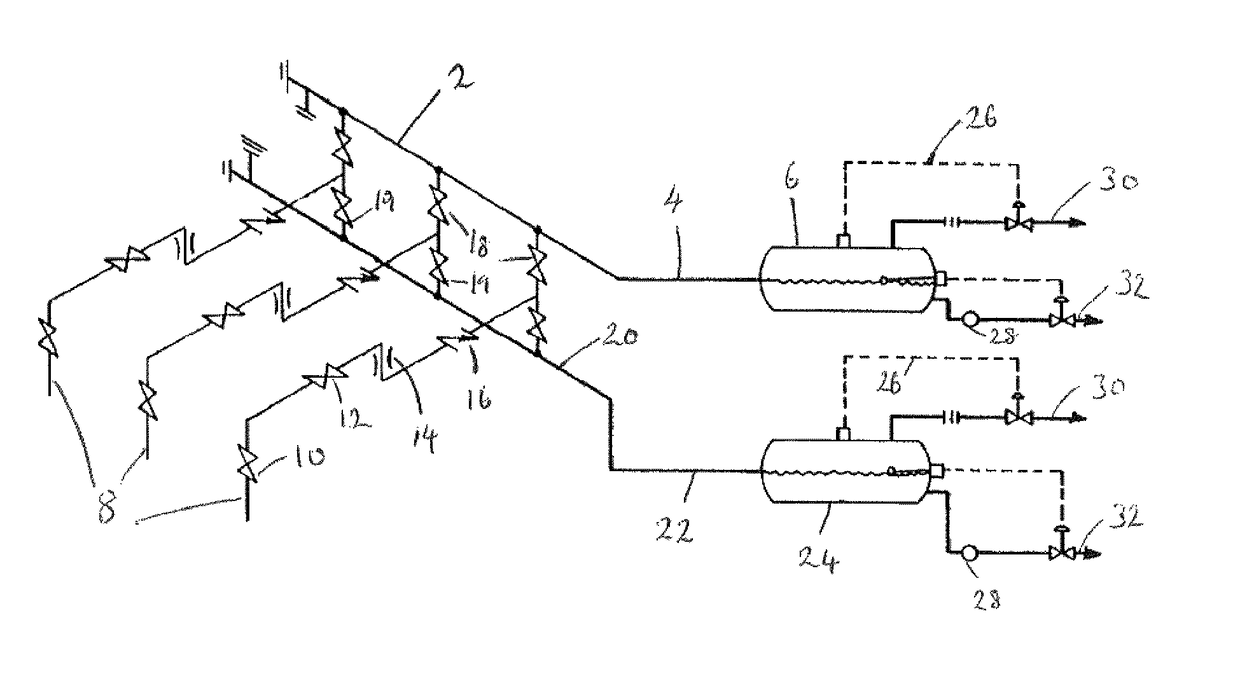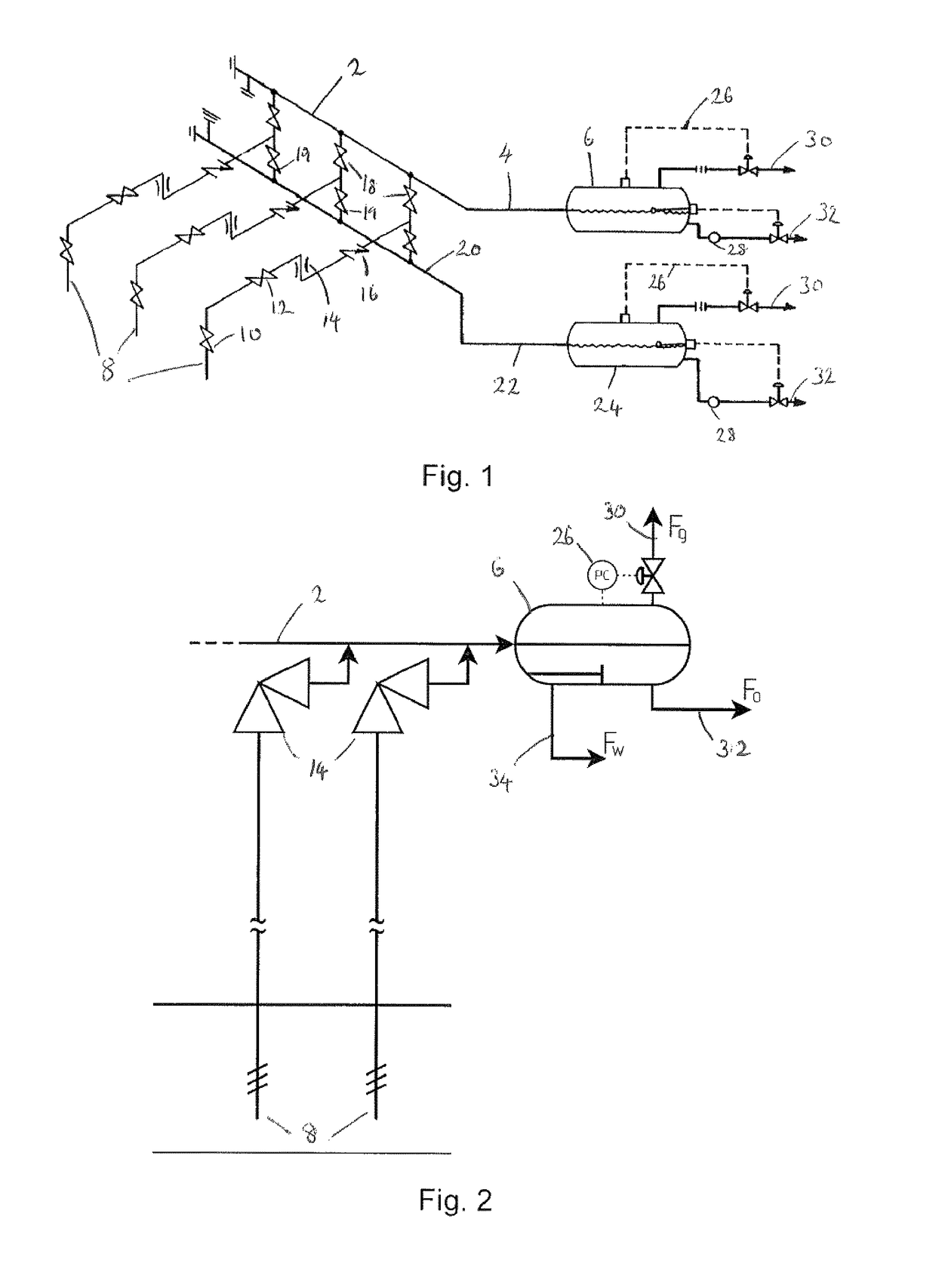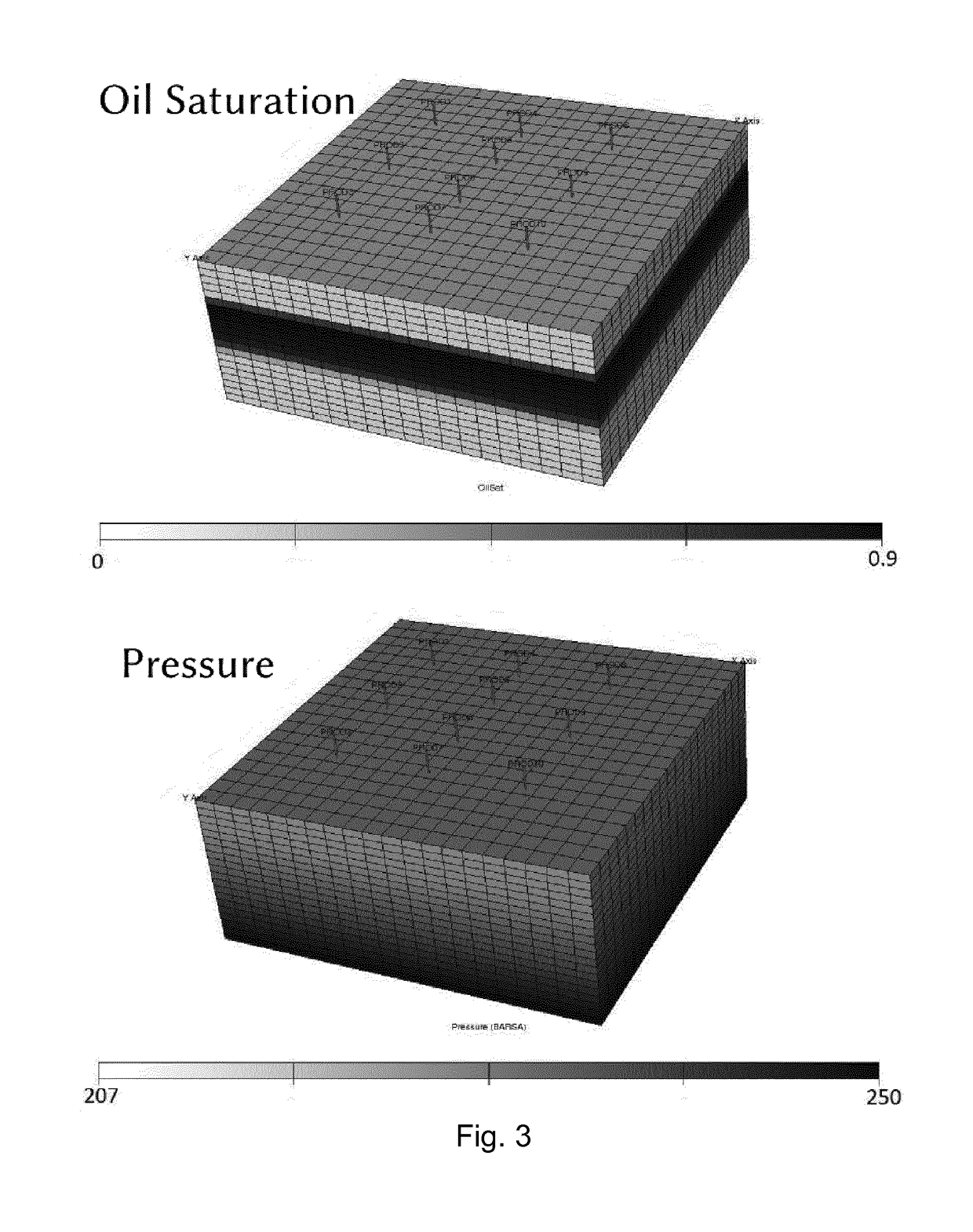Well testing apparatus and methods for measuring the properties and performance of oil and gas wells
a technology for oil and gas wells and testing equipment, applied in the direction of instruments, surveying, borehole/well accessories, etc., can solve the problems of low production reduction, achieve the effect of reducing production, simplifying valve control, and enhancing accuracy
- Summary
- Abstract
- Description
- Claims
- Application Information
AI Technical Summary
Benefits of technology
Problems solved by technology
Method used
Image
Examples
Embodiment Construction
[0052]A typical setup for conventional well testing is shown in FIG. 1. A production header 2 connects via a production flow line 4 to a production separator 6. In this case the production header 2 is connected to three wells 8. The wells 8 in this example all draw oil and gas from the same oil field. Each well 8 is connected to the header by a master valve 10, wing valve 12, choke 14 and check valve 16. Isolation valves 18 connect the production header to the lines from the wells 8. The lines from the wells are also connected via another set of isolation valves 19 to a test header 20. The test header 20 is a dedicated header used only for testing purposes. It connects via a test flow line 22 into a test separator 24. The production separator 6 and test separator 24 are tanks that separate oil and gas. Under the influence of gravity the oil settles at the base of the tank, with the gas occupying the space at the top of the tank. Each separator 6, 24 is equipped with a pressure contr...
PUM
 Login to View More
Login to View More Abstract
Description
Claims
Application Information
 Login to View More
Login to View More - R&D
- Intellectual Property
- Life Sciences
- Materials
- Tech Scout
- Unparalleled Data Quality
- Higher Quality Content
- 60% Fewer Hallucinations
Browse by: Latest US Patents, China's latest patents, Technical Efficacy Thesaurus, Application Domain, Technology Topic, Popular Technical Reports.
© 2025 PatSnap. All rights reserved.Legal|Privacy policy|Modern Slavery Act Transparency Statement|Sitemap|About US| Contact US: help@patsnap.com



